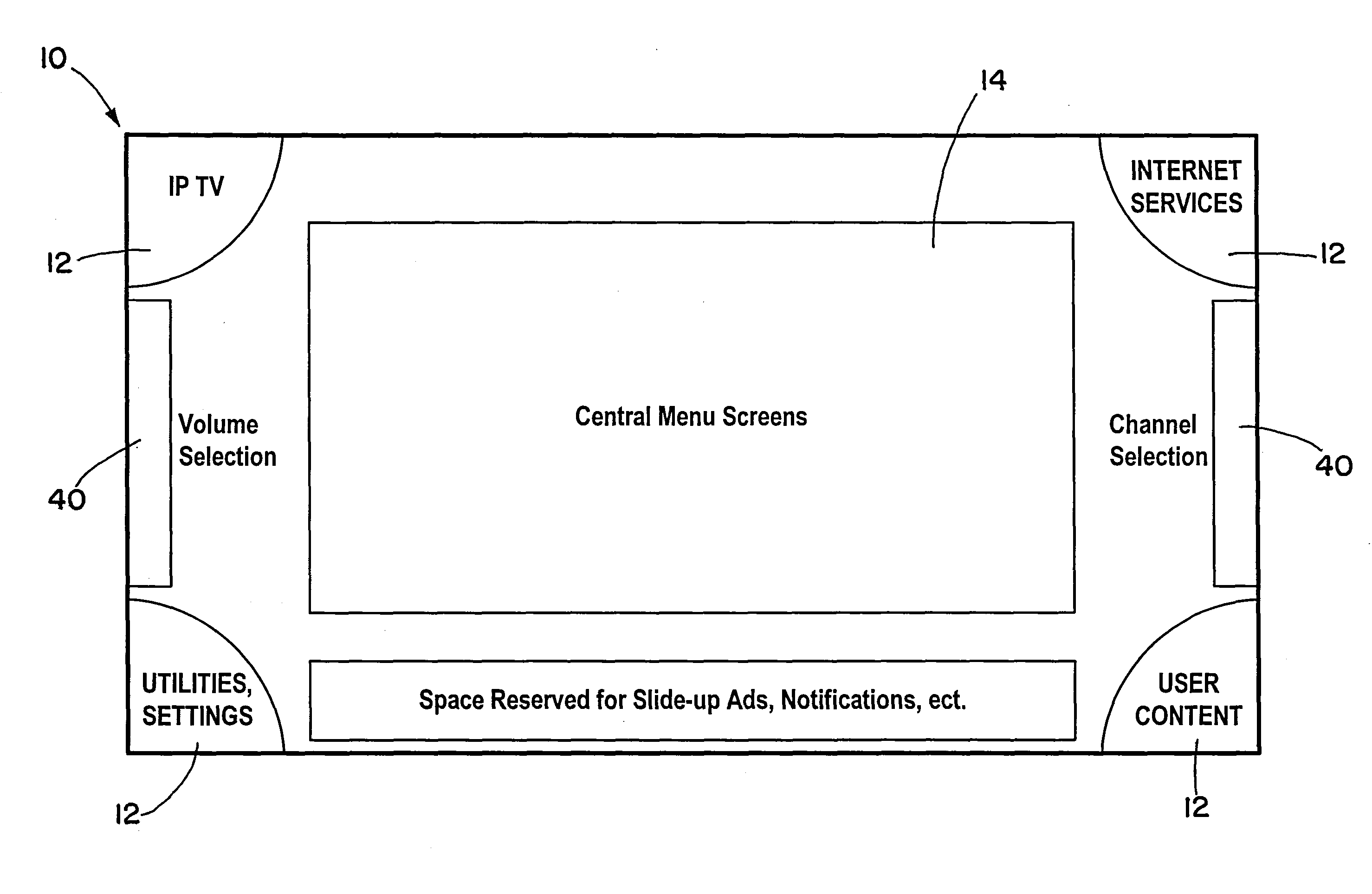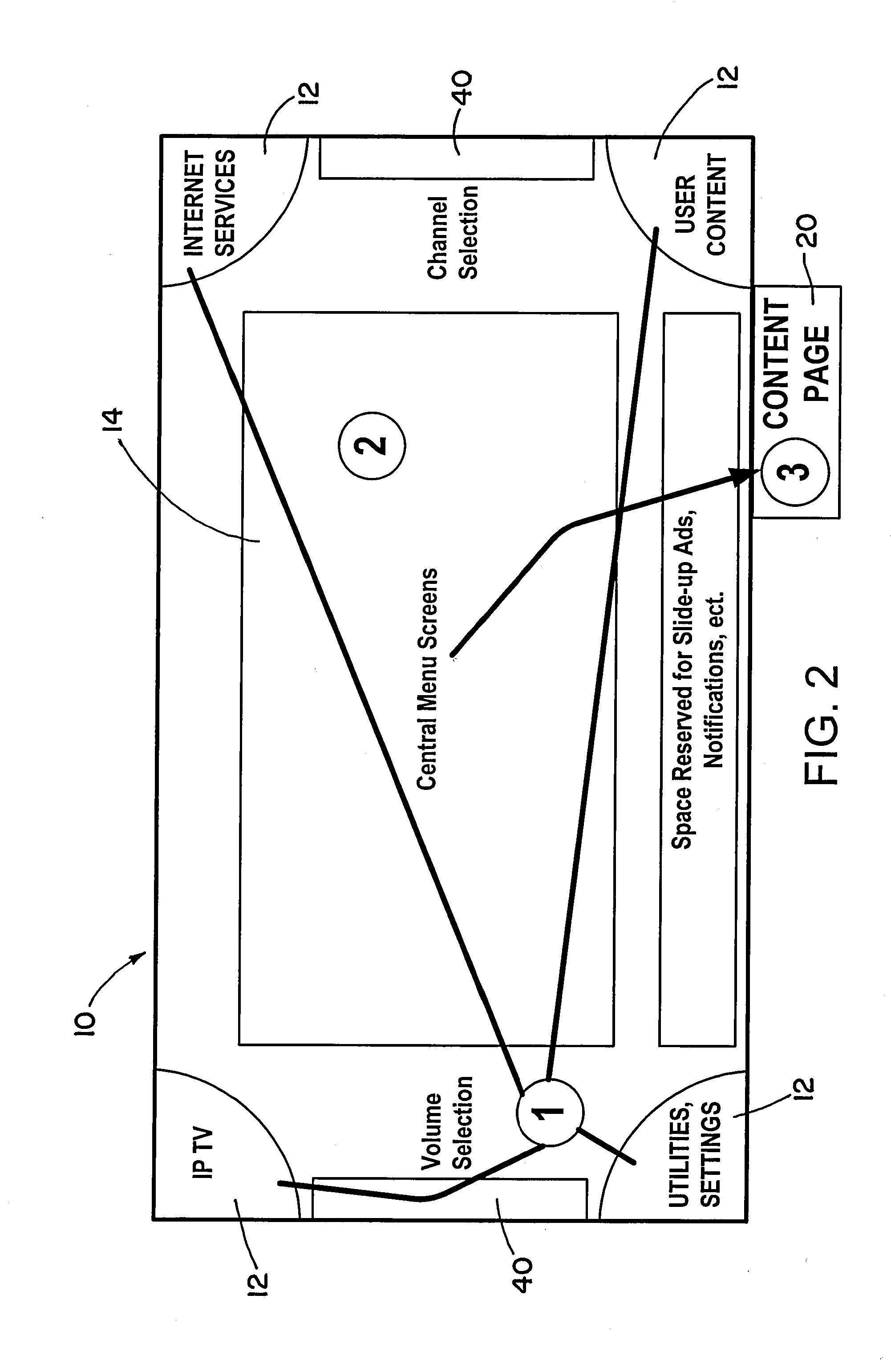User interface for interactive digital television
a digital television and user interface technology, applied in the field of interactive television, can solve the problems of not satisfying the user's experience of putting web pages directly on the television screen, and affecting the user experience of the personal computer user interface, so as to improve the visualization of the z-axis dimension of control
- Summary
- Abstract
- Description
- Claims
- Application Information
AI Technical Summary
Benefits of technology
Problems solved by technology
Method used
Image
Examples
Embodiment Construction
[0076]A method of selecting content for display on an interactive television may involve a multilevel selection process that includes selectable hot zones, for example in corners of a graphical user interface, and a central menu area. Selection of a hot zone may cause an increase in size or extension of the zone, prompting a further selection. This may lead to a display of content items in a central menu, with the user selecting content for display from the central menu.
[0077]A method of controlling an interactive television includes displaying a layout on the interactive television that includes one or more visual cues to prompt a user regarding an action (click action) to be taken on an input device to activate a predetermined function (click event). The visual cues may include multiple visual cues, at least one of which is a visual cue for a cursor-based action that includes positioning a cursor with an input device, and another is a visual cue for a movement-based action that in...
PUM
 Login to View More
Login to View More Abstract
Description
Claims
Application Information
 Login to View More
Login to View More - R&D
- Intellectual Property
- Life Sciences
- Materials
- Tech Scout
- Unparalleled Data Quality
- Higher Quality Content
- 60% Fewer Hallucinations
Browse by: Latest US Patents, China's latest patents, Technical Efficacy Thesaurus, Application Domain, Technology Topic, Popular Technical Reports.
© 2025 PatSnap. All rights reserved.Legal|Privacy policy|Modern Slavery Act Transparency Statement|Sitemap|About US| Contact US: help@patsnap.com



